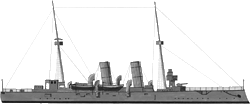-PROJECT-
Project Outline |
Current System
The MOET
The RNZN maintains a group of uniformed personnel to conduct Operational
Evaluations of the ships, as part of a quality assurance and performance
management system. This group is called the Maritime Operational Evaluation
Team or MOET. The team comprises of 15 - 20 personnel who are subject matter
experts in their own field and work to provide material, and operational
assessments of the Navy's ships.
Project Outline
The following checks are done by the MOET:
- Harbour Safety Check:
This is a mandatory check of the material readiness of the ship to proceed
to sea after a lengthy period alongside (generally 6 weeks). The team
check that all equipment is embarked, in date and that the ship is safe
to proceed to sea. This check roughly equates to a motor vehicle Warrant
of Fitness.
- Sea Safety Check:
The MOET embark on every vessel for the first day at sea after a Harbour
Safety Check. The MOET then assess a standard series of exercises that
ensures that the crew are capable of operating the ship safely in a
normal steaming configuration (ie core mariner and not combat tasks).
- Sea Check:
This is a 12 - 18 hour period where smaller ships' operational capability
is assessed by the MOET. The sea check is scenerio based and the ship has
to deal with the incidents that occur and strive to achieve their mission
aims. The MOET assess the reactions to the incident (boarding operations,
live firings, and fires and floods onboard).
- Work-up:
This is a 4 - 6 week period of training for ships, which culminates in a
32 hour Unit Readiness Assessment (Combat Evaluation). This is generally
conducted in conjunction with the Royal Australian Navy equivalent of the
MOET and utilises up to 50 personnel in assessing roles.
Back to Top
Current System
Currently the outlined checks from above are all paper based and handwritten.
Problems with the current system
There are quite a few problems with the current system:
- Propagation of MOET schedule:
At the beginning of the evaluation day a schedule is given to each of the Subject
Matter Experts (SME) to inform them of the events that will happen during the day.
However the central plan at the moment has no quick way for each SME to receive a
copy of the updated schedule.
- Handwriting issue:
SME have a varying degree of handwriting, there are problems of when it is time to
enter data into the computer and people cannot read what has been written. Therefore
inability to read what was recorded may cause misinterpretation of evaluation.
- Repetition of input data:
Data is effectively being input twice, once to record information, and second
transferring onto the computer. Thus it is an unnecessary time consuming process
which takes up the bulk of SME time.
- Quality checking:
Editing of information and management of what has been written can be cumbersome
and must be done manually.
- No statistical analysis of data captured:
There is no efficient way of analysing the information gathered at a quantitative
level.
- Quantity of paper:
The paper based forms use a vast amount of paper, which is wasteful of resources as
well as generating a big storage problem.
Back to Top
|
|
|









